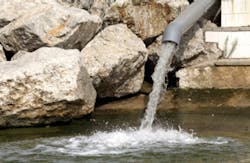City in Mass. ensuring its drinking water treatment facility meets CWA requirements
BOSTON — The city of Attleboro, Mass. has taken steps to ensure that its drinking water treatment facility operates consistent with federal Clean Water Act requirements for wastewater management, under a settlement reached with EPA for illegal wastewater discharges from the Russell F. Tennant Water Treatment Facility, according to a press release.
The city will also pay a $32,000 fine under the terms of the settlement.
An EPA inspection in May 2013 discovered that the city was illegally discharging wastewater from the facility’s water treatment process tanks that would contain aluminum among other pollutants, stated the release.
As part of the treatment process, the facility adds certain chemicals, including the coagulant polyaluminum chloride, to the water. Effluent from that process is normally sent to the city’s wastewater treatment plant. Once a year, the water treatment facility cleans out its pretreatment basins.
EPA inspectors discovered that the pretreatment basins were being cleaned at the time of their inspection and that a fire hose connected to one of the facility’s pretreatment tanks was discharging the effluent directly to a storm drain system and retention pond and, from there, through a pipe to Orr’s Pond, the city’s drinking water supply, noted the release.
Under the federal Clean Water Act, all facilities that discharge pollutants from any point source into waters of the U.S. are required to obtain a National Pollutant Discharge Elimination System (NPDES) permit.
The discharge of the effluent from the facility’s water treatment plant directly to the city’s storm system is also a violation of the prohibition against non-storm water connections to the storm system contained in the city’s stormwater management ordinance.
